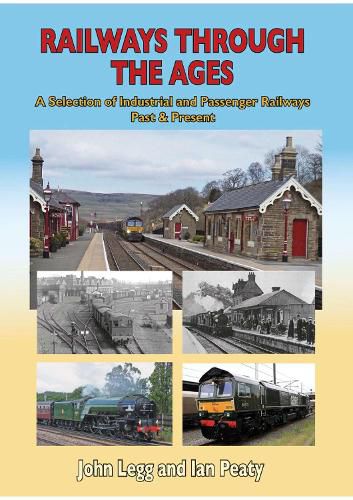Readings Newsletter
Become a Readings Member to make your shopping experience even easier.
Sign in or sign up for free!
You’re not far away from qualifying for FREE standard shipping within Australia
You’ve qualified for FREE standard shipping within Australia
The cart is loading…






From their early beginnings until today, railways have been an important part of the industrial and commercial fabric of the UK with lines running to all major towns and cities providing necessary connections for both freight and passengers. In past decades an abundance of both standard and narrow gauge railways existed, working small branch lines connecting both outlying villages and industrial sites with small private networks. Most have closed, but some have successfully resurrected themselves as heritage railways mainly supported by loyal volunteers. However, some industrial sites still have flourishing internal railways that connect to our National Network. Also, railway infrastructure has modernized to reflect the times we live in.
It is impossible to include all these railways worthy of mention in this book, but have chosen a cross section that we believe the reader will find interesting. The book includes a mixture of old and new, standard gauge, narrow gauge, industrial, heritage lines, stations and infra structure. Some areas have been included as they have interesting mixtures of the above and others because they offer unique insights in what used to be.
$9.00 standard shipping within Australia
FREE standard shipping within Australia for orders over $100.00
Express & International shipping calculated at checkout
Stock availability can be subject to change without notice. We recommend calling the shop or contacting our online team to check availability of low stock items. Please see our Shopping Online page for more details.
From their early beginnings until today, railways have been an important part of the industrial and commercial fabric of the UK with lines running to all major towns and cities providing necessary connections for both freight and passengers. In past decades an abundance of both standard and narrow gauge railways existed, working small branch lines connecting both outlying villages and industrial sites with small private networks. Most have closed, but some have successfully resurrected themselves as heritage railways mainly supported by loyal volunteers. However, some industrial sites still have flourishing internal railways that connect to our National Network. Also, railway infrastructure has modernized to reflect the times we live in.
It is impossible to include all these railways worthy of mention in this book, but have chosen a cross section that we believe the reader will find interesting. The book includes a mixture of old and new, standard gauge, narrow gauge, industrial, heritage lines, stations and infra structure. Some areas have been included as they have interesting mixtures of the above and others because they offer unique insights in what used to be.